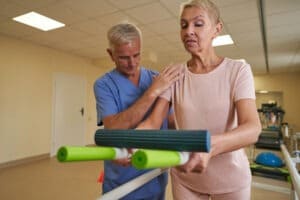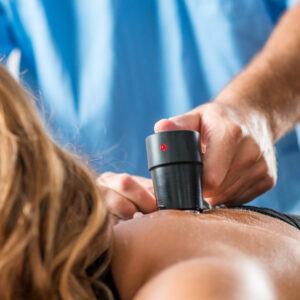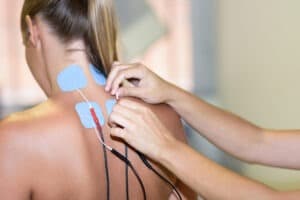
A spinal cord injury is one of the most severe and sensitive injuries one’s body can sustain. It is the most life-threatening when damage occurs to your upper back or neck area. Depending on the severity of your injury, damage to the spinal cord can result in life-altering circumstances such as loss of feeling, loss of mobility, and in some cases, paraplegia.
Nearly 18,000 new spinal cord injuries occur each year, and there are currently about 296,000 people living with spinal cord damage. The leading causes of injury are:
- Auto accidents
- Falls
- Violence (primarily gunshot wounds)
- Sports and other recreational activities
- Diseases such as cancer, arthritis, and other inflammatory conditions
The average age for a spinal injury is 43, and roughly 78% of spinal cord injuries occur in men. Of the hundreds of thousands of individuals suffering from a spinal cord injury each year, less than 1% have a complete neurological recovery at the time of their hospital discharge. Often, patients experience some form of paraplegia or quadriplegia and therefore require rehabilitation.
Treatment of Spinal Cord Injuries
Spinal cord injuries may cause loss of mobility, loss of feeling, and ongoing pain. If you have reduced bodily function after an initial diagnosis or hospital stay, rehabilitation is used to alleviate these symptoms and improve your quality of life.
Spinal cord injury rehabilitation is often a multi-faceted process, requiring both regular and specialty rehabilitation care. This treatment typically involves:
- Physical therapy
- Occupational therapy
- Medication
- Multiple surgeries
Ongoing, intensive medical care can be tiring. Fortunately, chiropractic care provides a holistic approach to pain management and rehabilitation assistance. Based on your doctor’s approval, chiropractic treatment can either coincide with your current care or replace it.
Chiropractic Care for Spinal Cord Injury Rehabilitation
A chiropractor is a healthcare professional with extensive training and a comprehensive understanding of the spine, back muscles, and the related nervous system.
Chiropractic treatment is often used to speed up recovery in mild back injuries by aligning the vertebrae in your spine. An alignment has many benefits, including:
- Alleviating pressure on the spinal cord
- Improving blood flow
- Reducing pain
- Encouraging the healing process
If you’re diagnosed with a misaligned spine, also known as a subluxation, your chiropractor can perform spinal manipulations or use a variety of other techniques to improve mobility and relieve pain.
Spinal Adjustments

Chiropractors employ a regimen of hands-on adjustment techniques and applied pressure techniques to align vertebrae in your spine. If you have a misalignment, a chiropractor will use their hands (or sometimes an instrument) in a controlled force or pressure on the joint(s) to gain mobility. A spinal adjustment doesn’t just help your spine but can help with pain in the rest of your body caused by misalignments from your injury.
Cold and Hot Therapy
Applying cold and heat treatments to the affected areas can increase circulation and reduce inflammation. Cold therapy may consist of injections of cold saline around the spinal cord to promote healing after decompression surgery. Cold therapy injections are most beneficial when given within a few hours of surgery or injury as needed.
Heat therapy involves applying moist or dry heat packs to your back for intervals of 15 to 20 minutes. It works to alleviate tension in your back.
Physical Therapy

Your chiropractor can recommend spinal cord injury rehabilitation exercises or physical therapy that you can do at home to stretch and strengthen your back. Exercise is an essential part of the rehabilitation process if you have mobility issues after a spinal cord injury. Chiropractors will incorporate exercises that consist of:
- Stretching
- Aerobics
- Strength training
- Endurance training
Physical rehabilitation efforts will require individualized programs, one-on-one sessions with a chiropractor, and at-home exercises to maintain improvements.
Ultrasound Therapy

Ultrasound therapy has many benefits if you suffer from a spinal cord injury, particularly in treating pain and promoting healing. This type of therapy increases blood flow to the surrounding tissue, improves flexibility, and reduces overall swelling.
Ultrasound therapy is a non-invasive rehabilitation option whereby a chiropractic clinic uses therapeutic ultrasound technology to heat soft tissue and improve muscle flexibility. This treatment can also be used to cause cavitation of the soft tissues in your back. The popping sound you hear when you crack your joints is the result of cavitation, and it results from pressure changes to gas bubbles around your tissue. Ultrasound energy can expand and contract gas bubbles in your tissues quickly, and the movement of gas may help to speed up the healing process.
Electrical Muscle Stimulation

Electrical muscle stimulation (EMS) is used to rehabilitate spinal cord injuries by strengthening the surrounding muscles and tissue. Your muscles tense and tighten when you exercise, and your chiropractor will simulate this behavior using this therapeutic treatment. A healthcare professional will place electrodes on your back to send an electrical current through your muscle tissue to improve or restore its function. In the long run, EMS helps to reduce the number of muscle spasms you have as well. This form of spinal cord injury rehabilitation also helps manage inflammation and control pain because it causes your body to release endorphins.
Lifestyle Recommendations
Additionally, chiropractors can suggest lifestyle recommendations that will promote your overall recovery. Spinal injuries vary widely in scope, so treatment and the road to recovery are very individualized. Your chiropractor will assess your mobility and pain at your first appointment. You will also get a chance to talk about your personal health goals. You may be working towards the goal of being able to walk again, or you may just be working towards the goal of being able to move your fingers. Either way, you can talk over these lifestyle changes and how to get the most out of life with your chiropractor.
Full-Service Spinal Cord Injury Rehabilitation in Denver
A full-service chiropractic clinic like Reinhardt Chiropractic can offer additional services to help you recover. These services are often complementary therapies to the more traditional care routine.
Acupuncture
Acupuncture helps to improve your sensory functions and reduce pain. This technique involves inserting hair-thin needles into your skin to elicit a response. While this experience differs for each patient, the size of the needles and precision by the acupuncturist means that the procedure typically doesn’t cause pain or discomfort. It can take three to four days to start feeling the benefits of your appointment.
Clinical Nutrition
Your diet plays a role in the amount of inflammation present in your body. Fortunately, many chiropractors offer nutritional counseling for spinal cord injuries to help your body heal from the inside out. You can go over meal plans with them that include:
- Lean meats
- Whole grains
- Fruits
- Vegetables
Massage Therapy

Massage therapy is a common rehabilitation tool for spinal cord injuries. There is very minimal risk involved in this treatment option. You may experience mild bruising, discomfort, or temporary pain for a few days after the massage. Massage therapy helps minimize inflammation of the soft tissue surrounding the nerves. In the long run, a therapeutic massage can also improve your circulation, enhance your range of motion, and reduce your overall pain.
Spinal Cord Injury Rehabilitation in Denver

Chiropractors have several holistic methods to aid in spinal cord injury rehabilitation. Treatment includes pain management solutions to help individuals improve their quality of life. Make an appointment today with Reinhardt Chiropractic to begin your healing journey.
Recent Post
Managing Stress and Tension: How Chiropractic Care Can Help
July 1, 2024
In our fast-paced world, stress and tension have become ever-present. Whether it’s the demands of work, family responsibilities, or the challenges of everyday life, many of us are constantly battling stress. At Reinhardt Chiropractic, we believe in a holistic approach to health that addresses not only physical pain but also the underlying stress that can
Read More…
Understanding the Benefits of Chiropractic Care for Athletes: Enhancing Performance and Preventing Injuries
June 1, 2024
In the world of sports, athletes are always seeking ways to improve their performance and prevent injuries. One often overlooked yet highly effective method is chiropractic care. At Reinhardt Chiropractic, we understand the unique demands placed on athletes and how chiropractic care can be a game-changer in their training and recovery regimes. Enhancing Performance Improved
Read More…
